The following article is a list of some of the unique drinks I have sampled during my travels. The majority are regional drinks but some are just associated with the region or country. Since I am not a big drinker, most are of the non-alcoholic variety. I’ll keep the list up-to-date as I come across new drinks in the countries I visit. I will be scoring the drinks as follows:
🙂 Yuck! Avoid!
🙂 🙂 Not that good. Won’t be trying again.
🙂 🙂 🙂 Meh.
🙂 🙂 🙂 🙂 Pretty good. Worth trying again.
🙂 🙂 🙂 🙂 🙂 Gotta have. Go out of your way to try this.
2000 Jamaica
Ting 🙂 🙂 🙂 🙂 🙂
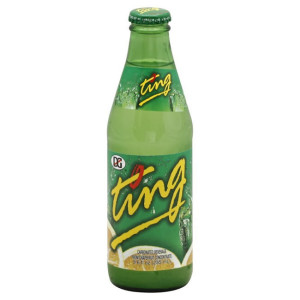
The drink that started it all. I first tried Ting while on training exercise with the army in Jamaica. Our ration packs had been mistakenly diverted to Panama so during the first week of our exercise we were buying our meals from local roadside vendors. Ting was what nearly every vendor had in their coolers so it didn’t take long for me to get addicted to this pleasant grapefruit flavored soda. Widely available throughout the Caribbean I have been able to find it in some convenience stores and grocery stores in Bermuda as well. While on a Caribbean cruise in 2004 I was able to find Ting at nearly every island we stopped at.
2010 Argentina
Paso de los Toros 🙂 🙂 🙂 🙂
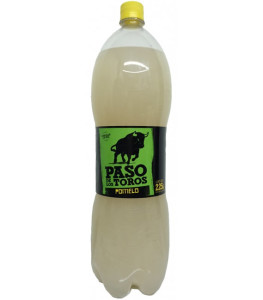
Following on with grapefruit flavored sodas, I was able to find Ting’s South America equivalent Paso de los Toros (Spanish for Bulls’ Pass) in Argentina. Actually a Uruguayan company (named after the Uruguayan city) the grapefruit flavor is similar to Ting (although not as good). I had trouble remembering the Spanish word for grapefruit (pomelo) when asking for grapefruit soda at a restaurant but was able to find a bottle on my last day in Buenos Aires.
2012 Uruguay
Fanta 🙂 🙂 🙂 🙂
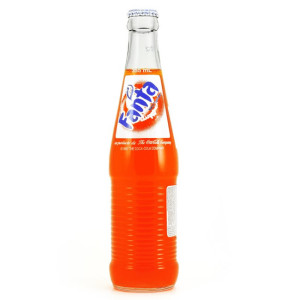
Although Fanta was first created during a trade embargo blocking Coca Cola syrup to Nazi Germany during WWII, it has become particularly popular on other continents such as South America and Africa. So of course I had to have the original orange Fanta with my chivito in Montevideo.
2014 Peru
Inca Cola 🙂 🙂 🙂 🙂 🙂
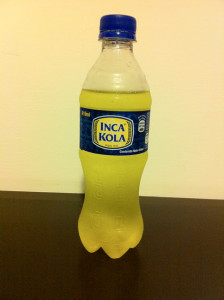
Prior to my trip to Peru, I was made aware of a local favorite Inca Cola. My first stop after arriving in Lima was to head to the hotel mini-bar and crack open an Inca Cola. Made with lemon verbena the soda has a unique flavor that is hard to describe (but it tastes good). Over the next two weeks I drank it whenever I could, even on the airplane back to Miami.
Pisco Sour 🙂 🙂 🙂
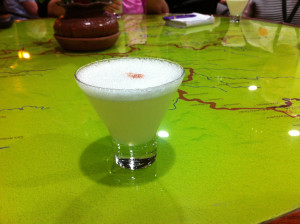
As the national drink of Peru, I couldn’t leave without trying a Pisco Sour. Made with Peruvian pisco (brandy), lemon juice, syrup, bitters and topped with an egg white for a pleasant dinner cocktail.
2015 Japan
Pocari Sweat 🙂 🙂
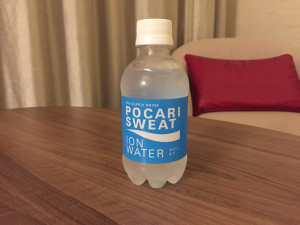
Another drink I heard mentioned quite a bit was the Japanese sports drink with the unfortunate name – Pocari Sweat. The sweat in the name actually refers to its ability to replenish the nutrients and electrolytes lost when you perspire, so basically Japanese Gatorade. I found the flavour pretty bland and not something I would necessarily want to drink again. Not bad, but not really good either.
Aquarius 🙂 🙂 🙂 🙂
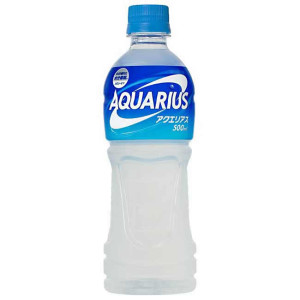
Aquarius was basically Coca Cola’s attempt to unseat Pocari Sweat from its sports drink throne in Japan. I actually found the lightly sweet grapefruit flavour much better than Pocari Sweat. As a result I took a few bottles with me while climbing Mt. Fuji.
Calpis 🙂 🙂 🙂
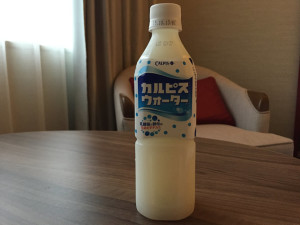
Yet another Japanese drink I heard about (again with an unfortunate name) was Calpis. The name unfortunately sounds like “cow piss”. It actually is a combination of calcium and sarpis the Sanskrit word for butter flavour. Calpis is a noncarbonated beverage with a watery, milky flavor made from fermented lactic acid. Its creator based the flavour on the Mongolian drink airag which is made from fermented mare’s milk.
Lemongina 🙂 🙂
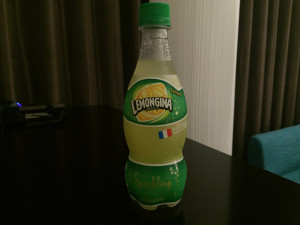
Okay this one’s not even remotely Japanese but as a fan of the French Orangina this was the first time I had ever seen the Lemongina variety. After drinking it however, I found the bitter lemon taste a little bit overwhelming.
Melon Soda 🙂 🙂 🙂 🙂 🙂
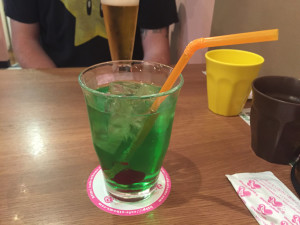
After seeing bright green drinks on the menus of many of the restaurants I went to, it wasn’t until near the end of my trip that I tried the popular Japanese Melon Soda. The taste is hard to describe since it doesn’t taste like any melon that I know of. The best I can say is that it tastes like they made a soda out of the green Lifesaver…sort of. In any case it tastes really, really good. It’s actually made from muskmelon which is the same stuff in the equally bright green Midori liqueur. Melon Soda is actually described as a virgin “Midori Dream” (Midori, vodka and Sprite). The next day I went to whatever restaurant was selling Melon Soda which happened to be the Japanese fast food chain MOS Burger (famous for their delicious Teriyaki-flavoured burgers). Just as a note the MOS Burger cafe at Haneda International Airport does not sell Melon Soda (a big disappointment on my departure).
2016 Namibia
Appletiser 🙂 🙂 🙂 🙂
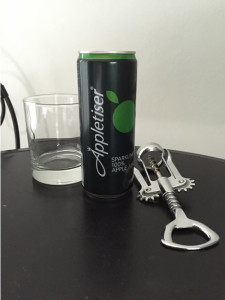
I found this unique drink in the guesthouse mini bar in Windhoek. It is essentially sparkling apple cider made by combining apple cider and carbonated water with no added sugar for a very pleasant taste.
Vigo Marula 🙂 🙂 🙂 🙂 🙂
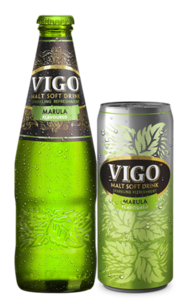
Namibian Breweries Limited makes this non-alcoholic malt soft drink using the marula fruit commonly found in southern Africa. The marula has a tart, citrus-like flavor that is hard to descibe but tastes exceptionally good. This is definitely a must have if visiting Namibia.
Amarula 🙂 🙂 🙂 🙂
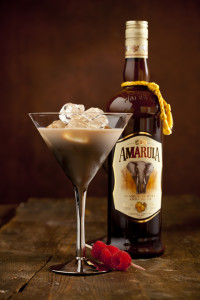
Amarula is a creamy liqueur made in South Africa using the marula fruit. It has a taste similar to Baileys but with a slightly fruity flavor. I drank some on a number of occasions but it definitely tastes better “on the rocks”.
Dare Power Play – Apple & Kiwi 🙂 🙂 🙂 🙂
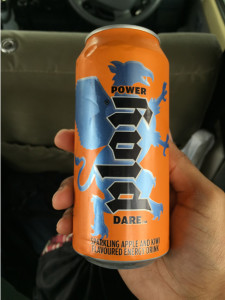
Dare makes various flavors of sparkling energy drinks. I decided to try the apple & kiwi flavor. The drink had a good blend of the apple and kiwi flavors for a pleasantly blended taste.
Oasis Farmdudler 🙂 🙂 🙂 🙂
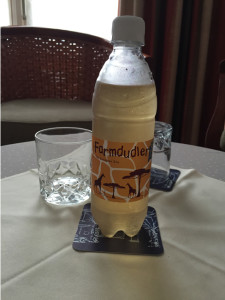
Oasis is a popular company in Namibia known for producing bottled water. They also produce a number of soft drinks. Farmdudler is their award winning herbal lemonade flavor. It has a unique citrus taste with a hint of green tea after taste.
Oasis Grapefruit 🙂 🙂 🙂 🙂
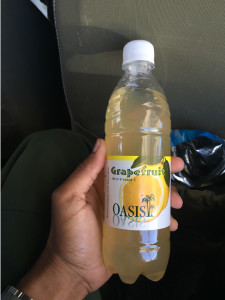
Another of Oasis’ flavors that I had to try was their grapefruit flavor. This one had a very subtle grapefruit taste that was not too strong and more of a “flavored mineral water”.
Oasis Orange 🙂 🙂 🙂 🙂
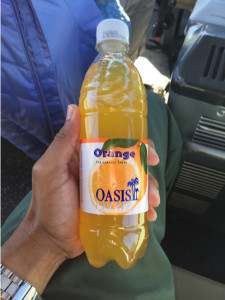
Oasis’ most popular flavor is their orange so I decided to give this one a try. It was good and like the grapefruit not overpowering or too sweet – more like carbonated orange juice.
Stoney Ginger Beer 🙂 🙂 🙂 🙂
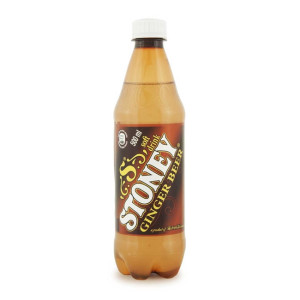
As a Bermudian I couldn’t leave Namibia without trying their ginger beer. In comparison to the ginger beer found in Bermuda (Barritt’s, Metro, Goslings), Stoney tasted like a milder version of Barritt’s. Not too strong but with a pleasant taste. I am told that the version sold in southern Africa tends to be more carbonated and sweeter while the version sold in east Africa tends to be more spicy.
2017 Orlando
Strawberry Ramune 🙂 🙂 🙂 🙂
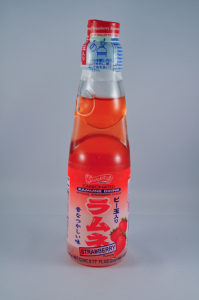
Ramune soda is a popular brand of soda in Japan known for the marble found in its spout. While I never tried any during my previous stay in Japan, my brother had some during a recent trip to Disney’s Epcot Center in the Japanese Pavilion. Ramune is the Japanese transliteration of the word lemonade which was the original lemon-lime flavor but now one of many. While I wouldn’t return to Japan for a few months, I found Strawberry Ramune in a specialty candy store in an Orlando outlet mall. While crazy expensive I did enjoy the sweet strawberry flavor of this soda and will be on the look out for it when I am in Tokyo.
2017 Miami
Jarritos Tamarind 🙂 🙂 🙂
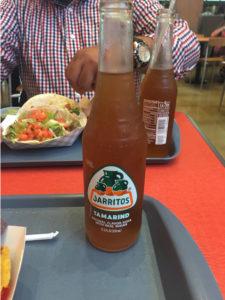
Jarritos is a Mexican soft drink manufacturer known for being the first to produce a tamarind flavored soft drink. While I am familiar with the tamarind tree and its pea pod like fruit I never realized the fruit was edible. The best way to describe the flavor is forgettable. It is not too sweet or too sour and not especially good but not bad either. Although its blandness brings down its score I wouldn’t mind trying it again.
Kola Champagne 🙂 🙂 🙂 🙂
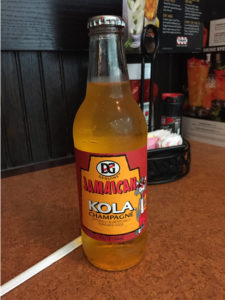
Growing up in Bermuda one of the sweetest, unique flavored sodas was Champagne Kola which tastes nothing like champagne or cola. Actually it tastes somewhat like Inca Cola with a more caramel flavor. Good-O and A-Treat were the most common brands with Good-O being the better of the two. I found this version from D&G (makers of Red Stripe beer) at a Jamaican restaurant in the Miami airport. While good I would rate it behind the A-Treat version.
2017 Argentina
Submarino 🙂 🙂 🙂 🙂
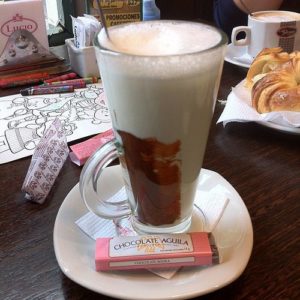
The submarino is a popular drink in Argentina and Uruguay. You are served piping hot milk and a bar of dark chocolate is dropped in and stirred until it completely dissolves – essentially hot chocolate. The taste is similar to the Nestle Quik chocolate mix from the 1980s which was more chocolately and less sweet than the mix you get today.
Malbec 🙂 🙂 🙂 🙂 🙂
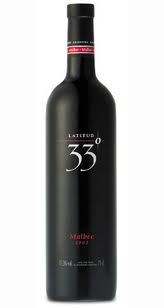
In recent years Malbec wine has become increasingly associated with Argentina, with Argentina purportedly producing the best variety. Latitude 33 Malbec is made by Bodegas Chandon in the high altitude region of Mendoza, Argentina on the foothills of the Andes mountains. The red wine has a slightly sweet flavor (hint of dulce de leche?) and the cleanest, smoothest finish I have ever tasted. They say that Argentina keeps the best Malbecs for itself and this appears to be true.
2017 Japan
Kirin Milk Tea 🙂 🙂 🙂 🙂
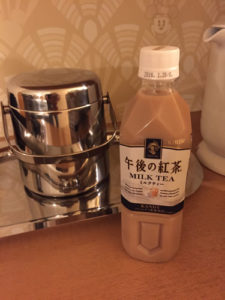
Kirin is a popular beverage manufacturer in Japan. A popular drink in Japan is Milk Tea which is basically cold tea with milk and sugar. It tastes very good and someone described it as chocolate milk if it came in tea form. It is not too sweet but just right.
Royal Milk Tea 🙂 🙂 🙂 🙂
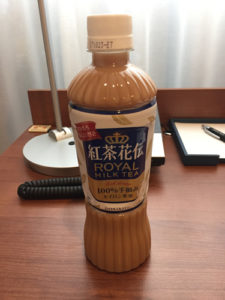
Apparently Royal Milk Tea differs from Milk Tea in the process by which it is made. Milk Tea is made the same as regular tea (boil water, add tea leaves, pour and add sugar and milk). Royal Milk Tea is made by boiling the tea leaves in milk and then serving. The end result seems to produce an identical taste though as I could not tell the difference between the royal and non-royal variety. But it still tastes good.
Plum Wine Soda 🙂 🙂 🙂 🙂
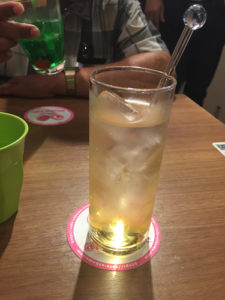
Plum wine (Umeshu) is a liquor made by steeping green plums in alcohol and sugar. Plum wine soda is made by adding two-thirds carbonated water. Although plum wine has a high level of alcohol the soda variant has very little alcohol taste for a sweet (but not overly so) pleasant tasting drink.
2017 Australia
Bundaberg Ginger Beer 🙂 🙂 🙂
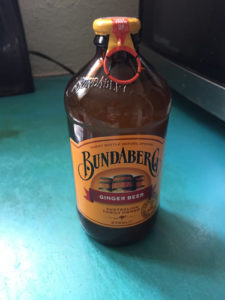
Bundaberg Brewed Drinks is a family owned soft drinks company based in Bundaberg, Queensland. They make a number of brewed drinks. This probably is the reason their ginger beer flavor is so distinctive. It is brewed with yeast over a period of 3 days. The resultant taste is of a fermented malty flavor very similar to that of homemade root beer or a malty beer. It is also not very spicy. This one gets a lower score only because it doesn’t taste too much like a ginger beer (even though technically all ginger beers were originally brewed this way). I actually tried this in Bermuda first at a local supermarket.
Bundaberg Pineapple & Coconut 🙂 🙂 🙂 🙂
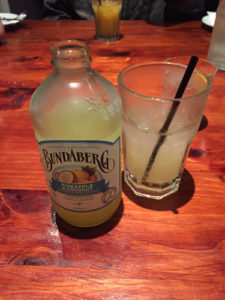
One of the many other flavors Bundaberg makes is Pineapple & Coconut. This one tastes very much like a less creamy, light pina colada.
Solo (Original Lemon) 🙂 🙂 🙂 🙂
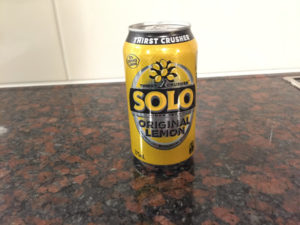
Solo is a brand of soft drink made by Schweppes Australia. It has a nice clean taste like a carbonated lemonade but not like Sprite. Although naturally sweetened the drink is not too sour. The taste is very similar to Ting but lemonade.
Kirk’s Ginger Beer 🙂 🙂 🙂 🙂 🙂
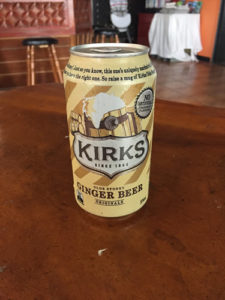
Kirk’s is a soft drink manufacturer from Queensland, Australia. Their Olde Stoney Ginger Beer is a unique but very pleasant drink with a distinctive cream soda/vanilla taste and a delayed spicy flavor. A definite try for the ginger beer aficionado. I would say it is almost better than Barritt’s Ginger Beer but that would be sacrilege.
Billy Tea 🙂 🙂 🙂 🙂
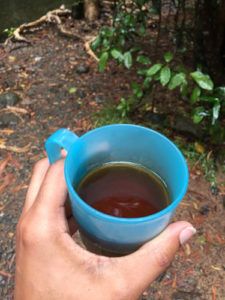
A staple of “bush tucker” is Billy Tea. Billy Tea is essentially Daintree grown black tea brewed in a metal can (billy can) over a fire. After brewing, the can is swung in a circle to separate and concentrate the loose tea leaves to the bottom of the billy can. I tried Billy Tea on two occasions, once with milk and sugar and on the second try in the traditional way, straight without any milk or sugar. Daintree black tea is a rich tasting, strong black tea.
Lift 🙂 🙂 🙂
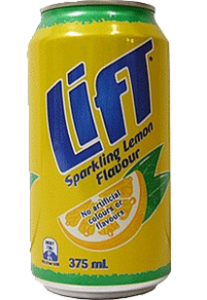
Lift is a soda produced by Coca-Cola and distributed to Australia. The Lift brand consists of carbonated fruit juices. I tried the lemon flavor which was good but not as good as Solo.
2018 China
Schweppes +C 🙂 🙂 🙂
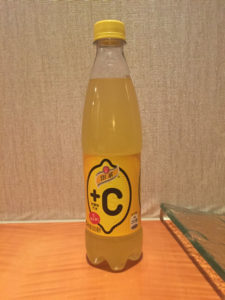
I have tried a number of different lemon flavored sodas in different countries. Schweppes +C is a lightly carbonated lemon flavored soda. It is not a sparkling lemonade so not very bitter. It has a clean, sweet flavor. It is not as good as Solo or Lift but not as bad as Lemongina either. It actually tastes like a carbonated version of Japanese lemon gummies I’ve had before (Vitamin C Charge Gummies).
Kahlua 🙂 🙂 🙂
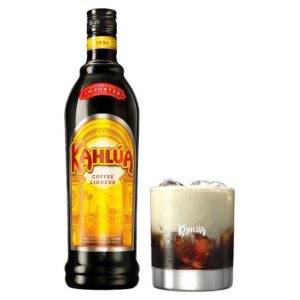
Although not a Chinese beverage, I did try some Kahlua on my China Eastern flight from Shanghai. Kahlua is a coffee-flavored liquor from Mexico made with rum and coffee and very similar to Tia Maria. I had it on the rocks. It has a slightly sweet coffee flavor but very different from Amarula or Baileys as taken straight there is no creamy flavor (although milk or cream is often mixed in as with a White Russian).
2018 Japan
Coca Cola Peach 🙂 🙂 🙂 🙂
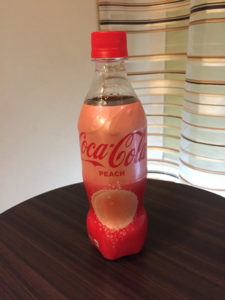
Coca Cola Peach is a peach-flavored Coke exclusive to Japan. Released for the first time this spring, this seasonal flavor has just the right amount of peach flavor without diminishing the familiar cola flavor. A must try.
Sake 🙂 🙂 🙂
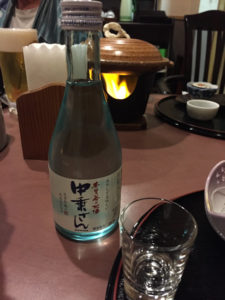
After my many trips to Japan, I finally decided to try some sake. My tour guide recommended cold sake. I am not sure but I believe this brand is Kirinzan. In any case it has a very light aroma and the texture of a wine but different. I am guessing the difference is due to the rice rather than grapes used in the fermenting process. Unfortunately when it comes to wine (rice or otherwise), for me Argentinian Malbec has spoiled it for everyone else.
Royal Milk Tea Strawberry Chocolate 🙂 🙂 🙂 🙂
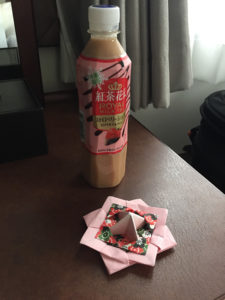
On my last trip to Japan I tried a few varieties of Milk Tea but stuck to the original flavor. This time I found a seasonal winter release in a vending machine in Matsumoto. This was a very delicious flavor with the strawberry and chocolate making it taste almost like a combination of strawberry and chocolate milk.
Grapefruit Sour 🙂 🙂 🙂
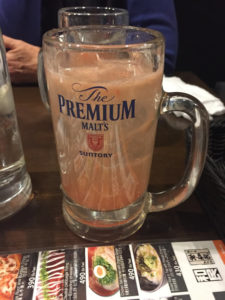
On the last night of my tour we went to an izakaya (Japanese-style pub) in Matsumoto. I had wanted to try a Midori Sour, however the izakaya only had Grapefruit Sour on the menu so I tried that instead. I am not sure if this sour was made with gin, whiskey or vodka as the alcohol content was very light. Otherwise it had a slightly bitter taste for a pretty unremarkable drink.
2019 Bahamas
Goombay Punch 🙂 🙂 🙂 🙂
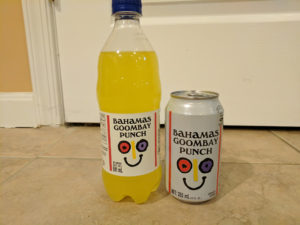
Bahamas Goombay Punch is a very sweet citrus flavored fruit punch soda made in the Bahamas. I encountered it at a soda fountain in the main dining room of the SuperClub Breezes resort I was staying at. It tastes very good consisting primarily of pineapple and lemon flavoring and a lot of sugar. A 12 ounce can contains 54g of sugar (30% more than a can of Coca Cola!).
Bahama Mama 🙂 🙂 🙂 🙂
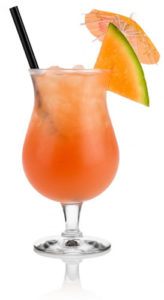
I was able to try this drink as a free incentive at Big Yard Restaurant at The Fish Fry, Arawak Cay. They were offering free conch fritters and Bahama Mama shots to anyone who ordered a meal at their restaurant. The Bahama Mama is essentially the equivalent of a Bermuda Rum Swizzle which is rum and fruit punch. The recipes vary but basically consist of one or more rums mixed with orange juice, pineapple juice and grenadine for a pleasant fruity cocktail.
Midori Dream 🙂 🙂 🙂
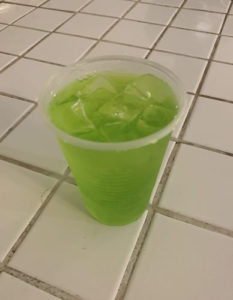
The SuperClub Breezes resort is an all inclusive resort with unlimited access to food, drinks and alcohol. As a result I decided to finally try out the elusive Midori Dream cocktail I couldn’t find in Japan. First the bartender had no idea what Midori (the most popular brand name for Suntory’s melon liqueur) was until I asked if they had any melon liqueur. They fortunately had an off-brand behind the bar. At that point there was no hope that he knew how to make a Midori Dream so I had to go from memory and asked for 1 part Midori to 2 parts Sprite. This was actually incorrect as the Midori Dream is really 2 parts vodka, 1 part Midori and 1 part Sprite. In any case what resulted was very similar to a melon soda but not as sweet.
Feeney’s Irish Cream 🙂 🙂 🙂 🙂
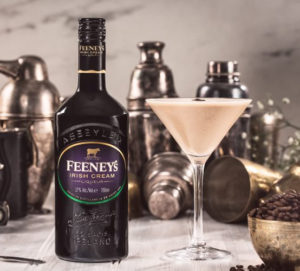
While I was partaking of the unlimited access to alcohol at SuperClub Breezes resort I decided to try a favorite after dinner drink of Irish cream on the rocks. While they didn’t carry the more well known Baileys brand they did have the highly rated if not so well known Feeney’s Irish Cream. Irish Cream consists of Irish whiskey and cream and was very reminiscent of the Amarula I enjoyed in Namibia.
2019 Argentina
Peach Bellini 🙂 🙂 🙂 🙂
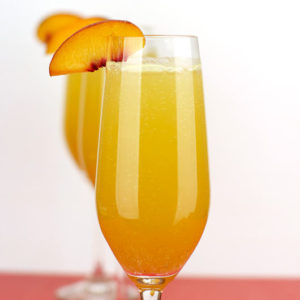
On the flight to Argentina I had the chance to try this delicious fruity wine. This particular Peach Bellini was made with Mionetto sparkling wine and peach bellini cocktail mixer. It was a fruity blend with light carbonation that reminded me of a mimosa.
Ginger Break 🙂 🙂 🙂
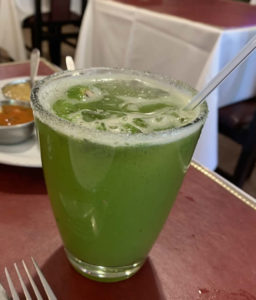
Ginger Break is a non-alcoholic Indian drink I was able to try at the Delhi Mahal restaurant in Buenos Aires. It is made with lime, fresh ginger, soda water, salt and brown sugar. It has a very strong lime flavor with an aftertaste like fennel tea.
Yerba Mate 🙂 🙂 🙂
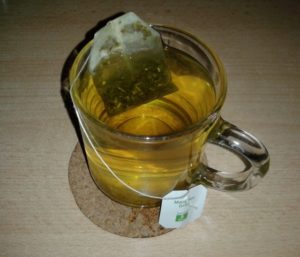
While at a ranch in Areco I finally tried the iconic Argentinian drink Yerba Mate. This one was via a tea bag in a mug rather than its usual loose tea leaves in a gourd with a bombilla. It tastes very much like green tea. To get the authentic flavor I tried it without sugar.
Irish Coffee 🙂 🙂 🙂
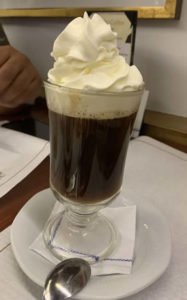
I was able to try an Irish Coffee at a small cafe in Buenos Aires. An Irish Coffee is made with coffee, whisky and cream. Surprisingly it was not as good as I thought. There was very little cream, the coffee made it bitter and the whiskey was really strong. It tasted closer to a Kahlua.
Malbec (update)
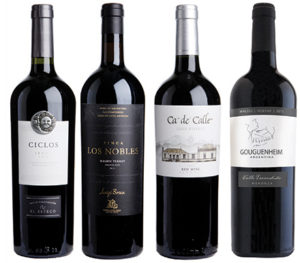
Although I was anxious to return to Argentina to once again sample the best red wine I had ever tasted, I was disappointed by the Malbecs I did eventually try. The first one I tried was at an upscale hotel in Buenos Aires. It tasted so unlike the Latitude 33 Malbec I had previously, I had to ask the waiter to make sure it was a Malbec. I tried it again in Areco with similar disappointment. I tried it once more in Ushuaia where it was better than the rest but not as good as Latitude 33. I guess Latitude 33 makes one of the best Malbecs.
2019 Antarctica
Rum Swizzle 🙂 🙂 🙂
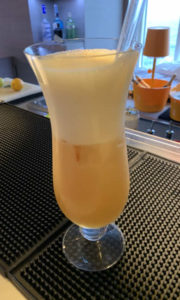
While sailing on the Le Lyrial cruise ship in Antarctica, I decided to see if the bartenders would be able to create a Bermudian Rum Swizzle. They had all of the ingredients so I gave them the basic recipe to try this Bermudian staple. They used 1 part pineapple juice, 1 part orange juice, 2 parts Havana Club Anejo 7 Anos black rum, and 1/4 part grenadine. It tasted okay but probably needed a little more grenadine. The strong Cuban black rum definitely made for a potent cocktail and one best not drunk on an empty stomach.
2023 Japan
Shiroi Koibito Chocolate Drink 🙂 🙂 🙂 🙂
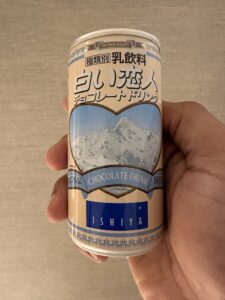
You can’t go too wrong with chocolate milk… I mean chocolate drink. This one comes from chocolatier Ishiya Co., makers of the Shiroi Koibito cookies. They use their signature chocolate in this pretty straightforward but delicious drink.
Aomori Cidre Standard 🙂 🙂 🙂 🙂
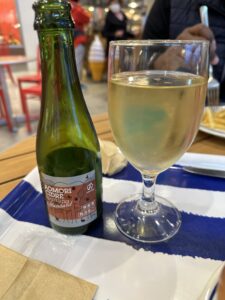
Aomori is known for its world famous Fuji apples. A trip to Aomori City is not complete without trying some of its signature apple cidre. Made with the very sweet Fuji apple it is sweet but not too sweet. The Aomori Cidre Standard is the middle of the pack of East Japan Railway Company’s line of cidres. Less sweet than the Aomori Cidre Sweet and less alcohol than Aomori Cidre Dry at only 5% The result is a nice flavored cidre with a light touch of alcohol and a clean after taste.
Aomori Cidre Dry 🙂 🙂 🙂
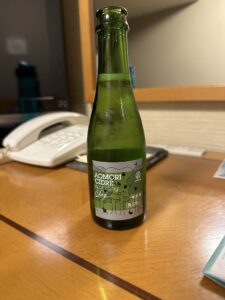
Aomori Cidre Dry has a slightly higher alcohol content at 7% which I found overall not as good as the Standard. As the name implies it has a more dry flavor and a lingering after taste.
Sparkling Apple Mild 🙂 🙂 🙂 🙂
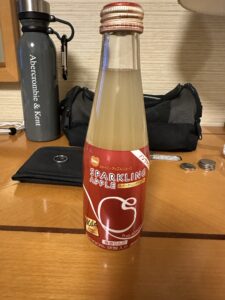
To round out my apple drink tasting, I tried the non-alcoholic Sparkling Apple Mild. This is very much a carbonated apple juice more in line with the Appletiser I had in Namibia. Nothng special but still very good.
Hojicha 🙂 🙂 🙂 🙂
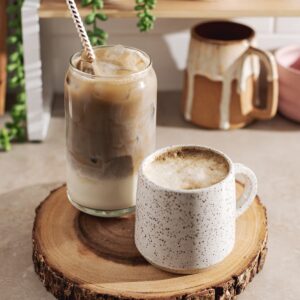
Hojicha (roasted green tea) was very much on my list of drinks to try on this trip to Japan. I had intended to try some at the specialty tea shop Nana’s Green Tea in Ikspiari at the Tokyo Disney Resort, however the shop didn’t open until very late in the morning on the day I was flying to Sapporo. I would try it three days later on my final day in Sapporo at the Keio Plaza Hotel restaurant Glass Seasons at breakfast. Hojicha is made by roasting green tea leaves at high temperature which removes any oxidation and thus any bitterness usually associated with green tea. The result is a more brownish tea with a richer body of a black tea while still leaving a hint of the green tea but without the bitterness. Although I did later purchase some hojicha tea bags at 7-11, it was not as good as the one I had at Glass Seasons. I suspect that it could be due to the tea bags being made from kukicha which consists of more of the roasted stems, stalks and twigs rather than the leaves.
Lemon Cidre 🙂 🙂 🙂 🙂
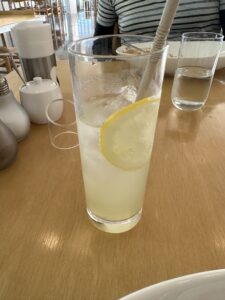
After sampling all of the apple cidres, I decided to try a lemon cidre instead. The taste was less of a Sprite or 7Up and more of a richer carbonated lemonade with very low alcohol content and a clean after taste.
Lemon Sour 🙂 🙂 🙂 🙂
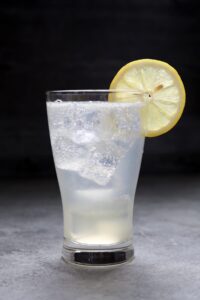
Following in the theme of lemons, I would try a Lemon Sour later that same day. While different from the Lemon Cidre, it was similar with low alcohol content and carbonation for a very pleasant taste.
Soju 🙂 🙂 🙂
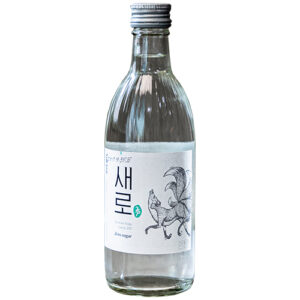
While at a Korean food stall, I had the chance to try some Korean Soju. Like sake it is also a distilled alcohol made from rice but at the same time different. At 20% alcohol content it was very strong with a similar feel and taste to sake. Overall nothing special.
Kirin Grapefruit 🙂 🙂 🙂 🙂
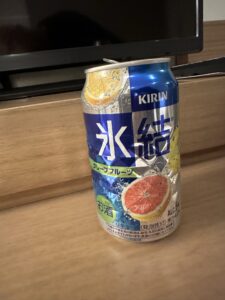
I decided to try a Kirin Grapefruit from a vending machine at the hotel. This was very much a grapefruit sour made with vodka but very light with 5% alcohol content. While the grapefruit flavor is stronger than a Ting, it was much better than the grapefruit sour I had on my previous trip to Japan as it wasn’t as bitter.
Coca Cola Melon 🙂 🙂 🙂 🙂
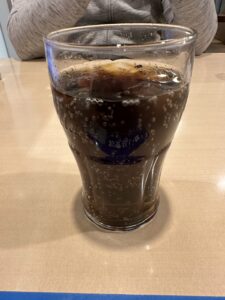
While at the family restaurant Jonathan’s I was able to sample multiple varieties of Coco Cola from their endless soda fountain. Like the Coca Cola Peach I had on my previous trip to Japan, these flavors appear to be Japan exclusives. Coca Cola Melon is basically Coca Cola mixed with Melon soda, something that I drink every time I visit Japan. Like the Coca Cola Peach, the Coca Cola is perfectly balanced with the melon soda so that neither flavor overpowers the other for the best of both worlds.
Coca Cola Budou 🙂 🙂 🙂 🙂

In this same vein I then tried Coca Cola Budou which is basically Coca Cola mixed with grape soda. Like the other flavors, the mix is perfect in that you can still equally taste the Coca Cola and grape flavors
Caramel Macchiato 🙂 🙂 🙂 🙂
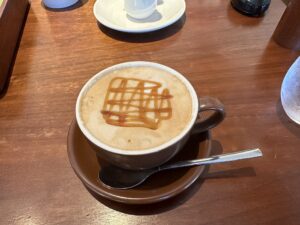
A coffee favorite of many, the caramel macchiato is a smooth expresso added to steamed milk and topped with caramel. The extra milk and added sweetener from the caramel creates a more flavorful variant of the typical expresso.
Royal Milk Tea (Instant Mix) 🙂 🙂 🙂 🙂
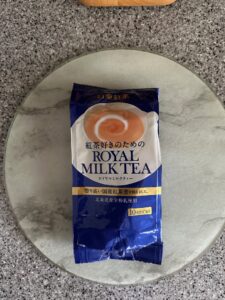
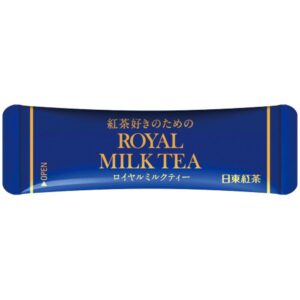
Another staple of my trips to Japan is Milk Tea. This time I found something I had never seen before, instant mix packets for Royal Milk Tea. While common for instant coffee, I had never seen this in tea form and was anxious to buy it and try it once I got back home. Like instant coffee that includes milk powder in its mix, the Royal Milk Tea does the same but replacing the coffee with powdered tea. All that is required is the addition of hot water. Remarkably it tastes very good. Extra milk can be added for an even creamier taste. As I only had a limited amount, I never tried it cold. If I did, I would have still mixed it with hot water first before refrigerating it to cool it off.




